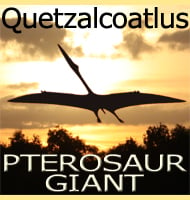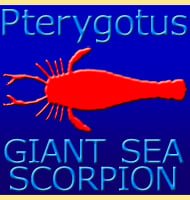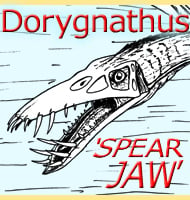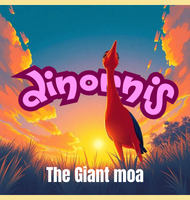In palaeontology all fossils are valuable, and each can help piece together the prehistoric world that existed before the presence of mankind.
Some fossils however are possibly more valuable to our understanding of life, and these are called ‘transitional forms’. A popular term for these forms in the media is a ‘missing link’, although no serious scientists uses this term as it can be unintentionally misleading.
Transitional forms are those that show one kind of creature changing to become another kind of creature. This could be a mammal developing aquatic adaptations to become a whale, or a fish whose limbs start to look and act like legs, or as in the case of Archaeoraptor, a dinosaur becoming a bird.
Discovery and study
Most people think of fossils being discovered when dug out of the ground in big chunks of rock that are then cleaned up at museums and put on display. But another source of fossils is the private fossil market. This is where fossil hunters, not necessarily trained paleontologists , recover fossils for the purpose to selling them to dealers and collectors.
In February 1999, the Dinosaur Museum in Blanding, Utah purchased what appeared to be the most convincing fossil yet of a dinosaur evolving into a bird. The sale happened after Stephen Czerkas, who runs the museum with his wife Sylvia, saw the specimen when it was presented by a dealer at a gem show Arizona. The fossil, which would be later named Archaeoraptor, was sold for a reported $80,000, and the money was raised by patrons of the museum. However the only thing known about the fossil at the time of purchase is that it had come from China.
Although purchased as a museum piece, the specimen still needed to have its scientific value verified and for this the Czerkases asked renowned Palaeontologist Philip Currie to look at it. Currie informed the National Geographic Society about the fossil and agreed to study it on the grounds that it would be returned to China, an important condition as the Chinese government had made the exporting of fossils outside of China illegal. National Geographic also flew out the eminent Chinese palaeontologist Xu Xing, who had a lot of experience recovering and studying fossils of feathered dinosaurs.
It seems that doubts about Archaeoraptor appeared early on, with Currie noticing that the feet and their arrangement were mirror images of one another. When Archaeoraptor was subjected to CT scans in late July of that year, further concerns were raised. Dr Timothy Rowe, who conducted the scans noticed that the specimen appeared to have been made up of several parts, with the tail portion not connecting to the upper animal in any way.
It is claimed that when concerns about the possibility of Archaeoraptor being a composite specimen were raised with the Czerkases, the researchers were told to keep their doubts to themselves. Also when Currie had his preparator Kevin Aulenback prepare the fossil, Aulenback commented on it being a composite. The Czerkases denied this, and Aulenback only told his suspicions to Currie.
The original plan for the Archaeoraptor study was to submit a paper for peer review, and for National Geographic to follow it up immediately with a magazine article. The intention for this was so that National Geographic who were funding the research could get an exclusive and print long before any other scientific publication. However when it was submitted to the science journal Nature for review, it was rejected on the grounds that there was not enough time for a peer review given the publishing deadline set by National Geographic. The paper was then sent to the journal Science. Very interestingly Science did send it out for peer review, with two reviews being returned, both stating that the specimen had been altered. Christopher Sloan, the person who would actually write the ‘Feathers for T.rex?’ article later said in an issue of Nature that the Czerkases did not tell him about the Science reviews.
Along with an October press release, Archaeoraptor appeared in the November 1999 issue of National Geographic (VOL. 196, NO.5), as part of a wider piece about feathered dinosaurs (pages 98-107). Archaeoraptor received a dedicated two page spread where a photo of the specimen under ultraviolet light was printed across both pages, with dedicated text referring to it across the bottom. Archaeoraptor also got a brief mention over a few paragraphs in the main article.
The revelation
Back in China, Xu Xing had been looking for further fossil examples resembling Archaeoraptor, and eventually he found another tail specimen that bore a striking similarity to the tail of Archaeoraptor. After very careful analysis of his own recovered specimen, Xu realised that he did not just have another specimen, but he actually had the counter slab to the tail of the Archaeoraptor specimen. Because of the way that many Chinese fossils are preserved, a rock sample has to be split in two, revealing the remains and creating two sets of impressions. What Xu now had was the other half of the rear portion of Archaeoraptor.
This was a great find but it would also confirm the doubts about Archaeoraptor. The position of the tail with the inclusion of bone that was missing from the Archaeoraptor specimen, along with oxide stains on the slab that matched the other half perfectly, left no doubt that this was the other half of the tail. But it also did not match the upper portion of the remains in any way.
In December 1999, Xu sent an email to the National Geographic society with his findings and their potential consequences for the validity for Archaeoraptor.
Impact
After receiving the email, National Geographic began checking its information again, and previous doubts about the specimen resurfaced with a wider audience beginning to pay attention. In February 2000, National Geographic issued a press release explaining the possibility that Archaeoraptor was not a genuine fossil. This was an embarrassment to many of those involved, and some people and groups who do not agree with the dinosaur to bird evolution theory immediately jumped on the scandal to publicise their own theories.
Creationists often refer to Archaeoraptor as the ‘Piltdown bird’, in reference to the ‘Piltdown man’, an early twentieth century hoax of a missing link between man and apes. While Archaeoraptor was initially publicised as a ‘missing link’, creationists have in turn used it as evidence that evolution is a flawed theory and the only true course of events are those described during genesis in the bible.
Some creationists also explained Archaeoraptor as only existing because scientists only saw what they wanted, which is a somewhat hypocritical view considering that many creationists did and continue to use Archaeoraptor as a vehicle to push their own anti evolution ideology. It is also a curious choice for this purpose, as even though Archaeoraptor only exists as a composite fossil, it does not disprove evolution, it merely highlights the presence of an illegal fossil trade.
The outcome
Had the Archaeoraptor been genuine it still would not have been the only piece of evidence to support the idea of birds into dinosaurs. Detractors of the dinosaurs to birds theory often don’t even attempt to address the uncountable fossil specimens that number in at least the thousands, that do show transitional forms, instead preferring to stick with the ‘safe fake’ of Archaeoraptor. The number of these transitional forms also continues to rise, with even more newly discovered forms coming to light.
The two creatures that were used to create Archaeoraptor, Microraptor and Yanornis, are now catalogued and quite well known to palaeontology. In fact Microraptor is known by at least three hundred specimens, all together showing that Microraptor was a small feathered dinosaur that did show morphological similarities with the earlier birds. In fact Microraptor may have had a lifestyle more similar to that of a bird than a dinosaur.
Yanornis is considered to be an early bird and despite its primitive appearance it displays many features that are known in modern birds.
Lessons learned
Archaeoraptor was purchased with the intention of public display, and its study funded by National Geographic on the condition of exclusive story rights. These two facts put pressure upon the study of the remains and hindered the chance for a widely published peer review. Had these factors not been present, the truth about Archaeoraptor would have been known.
Specimens that are heralded as ‘missing links’ should be subject to very careful, and very cautious scrutiny. These specimens are the ones that can be most misunderstood, and as in the case of Archaeoraptor, most likely to be faked or altered to increase their monetary value.
Archaeoraptor should also serve as a cautionary tale for collectors of fossils, since at the time of writing this article it is still illegal to export fossils from China. Not only can you be getting involved in an illegal black market, many of the so called ‘genuine’ fossils on the market, are actually reproductions of genuine fossils. There is nothing wrong with collecting reproductions, many people prefer it, but you still don’t want to be paying genuine fossil prices for what is a copy.
Special note* The purpose of this article is not to pin blame upon anyone, but to serve as a cautionary case about researching the past.









